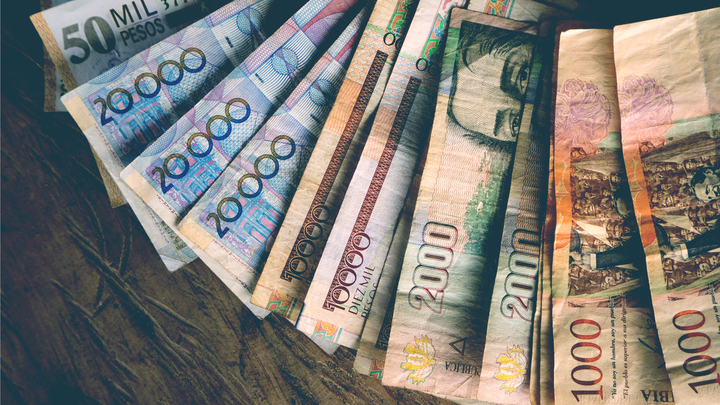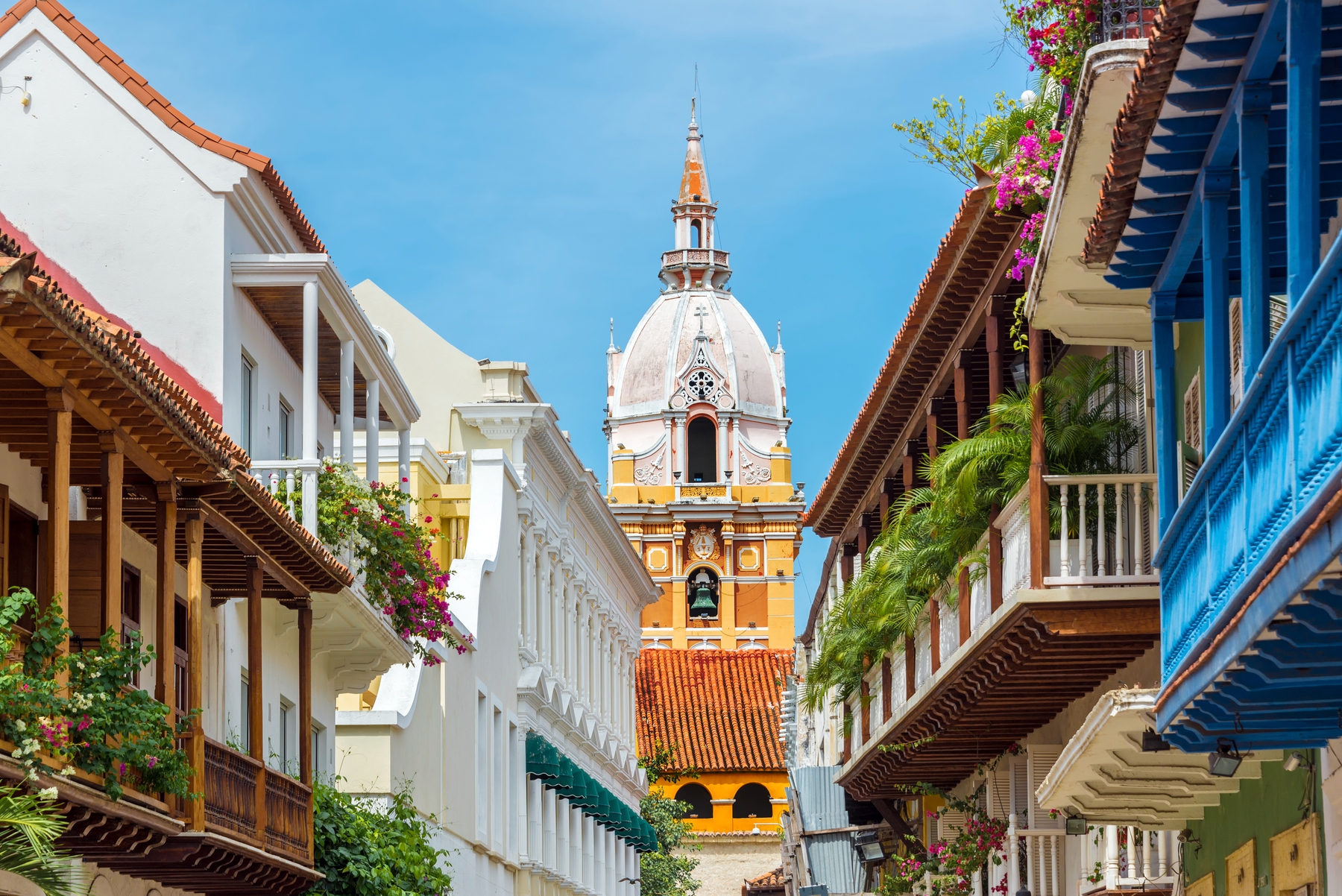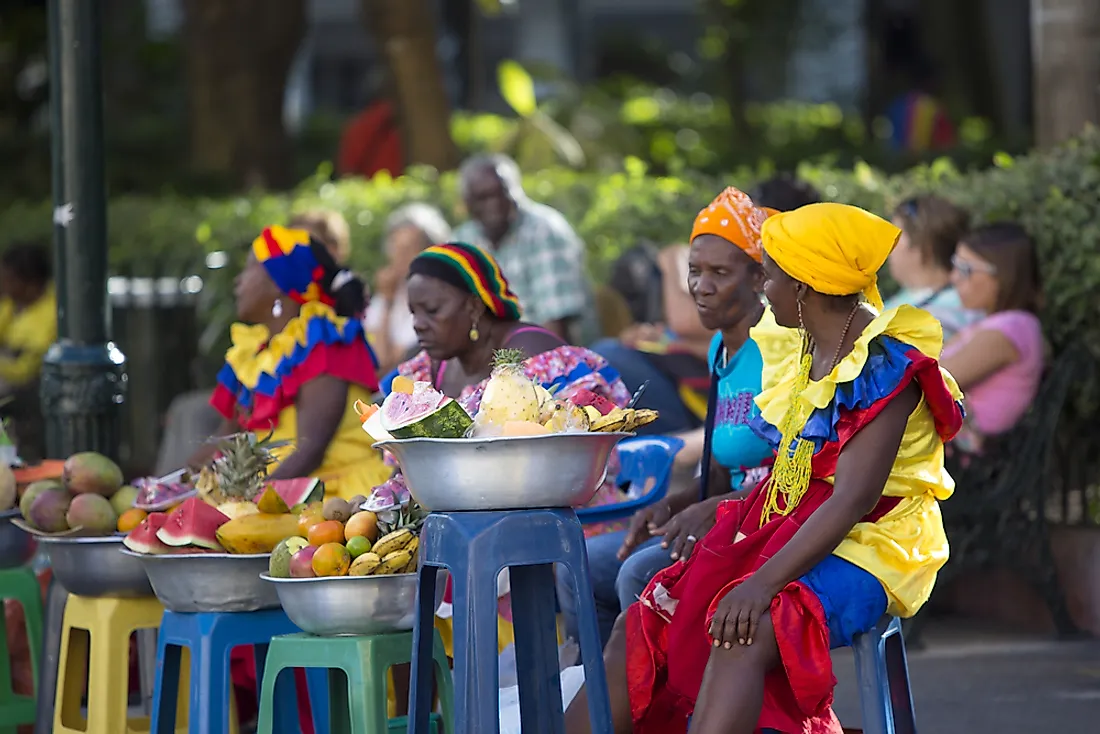
Colombian, with a population of more than 50 million, is one of the most diverse countries in the world in terms of language and ethnicity. Among the countries that speak Spanish, the second most crowded country since Mexico. Native civilizations, European settlers, African slaves and migrants from Europe and the Middle East are the source of the country's rich cultural heritage. The population centers of the country are concentrated on the Andes and the Caribbean coast.
 The earliest evidence of human life on Colombian soil today is 12.000 BC. Native cultures such as Cipca, Quimbaya and Tairona are the oldest known civilizations in the region. In 1499, the Spaniards set foot in La Guajira to begin the colonization process. Until the 16 st century, various parts of the region were colonized and the New Granada Kingdom of the capital of Santafé de Bogotá was established. In 1810, independence was declared from the Spanish Empire, the United States of New Granada. The country has previously been tried federal governments such as the Granada Confederation (1858) and the United States of Colombia (1863), but these administrations have not been extended and the Republic of Colombia was established in 1886. With Panama leaving in 1903, Colombia reached its limits today. in 1960, low-intensity armed conflicts and political violence increased in the country, and reached its peak in 1990. since 2005, progress has been made in the areas of security, stability and rule of law, and there has also been an unprecedented period of economic growth and development.
The earliest evidence of human life on Colombian soil today is 12.000 BC. Native cultures such as Cipca, Quimbaya and Tairona are the oldest known civilizations in the region. In 1499, the Spaniards set foot in La Guajira to begin the colonization process. Until the 16 st century, various parts of the region were colonized and the New Granada Kingdom of the capital of Santafé de Bogotá was established. In 1810, independence was declared from the Spanish Empire, the United States of New Granada. The country has previously been tried federal governments such as the Granada Confederation (1858) and the United States of Colombia (1863), but these administrations have not been extended and the Republic of Colombia was established in 1886. With Panama leaving in 1903, Colombia reached its limits today. in 1960, low-intensity armed conflicts and political violence increased in the country, and reached its peak in 1990. since 2005, progress has been made in the areas of security, stability and rule of law, and there has also been an unprecedented period of economic growth and development.
ETYMOLOGY
The name "Colombia" was created by Venezuela's revolutionary Francisco de Miranda. He was sent to his land under the sovereignty of Spain and Portugal.
DEMOGRAPHY
According to the National Administrative Statistics Department (DANE), 51,2% of the Colombian population is women and 48,8% are men. 22,6% of the population is under the age of 14; 2019 estimates suggest 68,2% of the population is between 65 and 15 years old and 9,1% over 65 years old.
The official language of Colombia is Castilia, but there are about 500.000 native language speakers in the country. There are 101 languages listed in the country, eighty of them are alive, and 21 of them are extinct. Catalan (or Valencia) is spoken by Spanish immigrants. There is also Palenquero, a kreol language spoken by about 2.500 people in Mahates.
According to a DNA genetic study conducted by the University of Brasília (UnB) in 2008, the composition of the Colombian population is: 33,80% domestic contribution, 45,90% European contribution and 20,30% African contribution.
RELIGION
The Colombian Constitution guarantees freedom of faith. Although the Colombian government cannot legally document the religion issue, according to research published in 2012 and 2013, the country's faith distribution is as follows;
13,7% Protestant
6,4% Ateist or agnostic
13,5% unreligious theist
1,8% Jehovah's Witness and Adventist
%1 other
2,2% said he either didn't answer or didn't know.
ECONOMY
Colombia, a historically agricultural economy, 20. it was quickly urbanized in the 20th century. At the end of the century, only 22,7% of workers were working in agriculture and only 11,5% of the country's GDP. 18,7% of workers are employed in industry and 58,5% in services, and 52,5% and 36% of GDP respectively. The country's main trade partners are the United States (the controversial free trade agreement with the United States is currently awaiting approval by the US Congress), Venezuela and China. The balance of all imports, exports and total trade has resulted in record levels, and a significant revaluation of export dollars between the entry and.
 Colombian economy 20. In the second half of the century, it grew steadily and gross domestic product (GDP) grew by more than 4% on average between 1970 and 1998 years. The country suffered a recession in 1999 (the first year of the year). Negative growth since the great Depression) and recovery was long and painful. However, growth in recent years has been impressive and is one of the highest growth rates in Latin America, reaching 8.2% in 2007. Meanwhile, the Colombian Stock Exchange has gone from 1.000 points to over 7.300 points in November 2008 since its launch in July 2001.Colombia's nominal GDP was 202,6 billion dollars in 2007, according to the International Monetary Fund (IMF) estimates (37 of the world. The largest and the fourth largest in South America). The demilitarized purchasing power party (PPP) is in 82 positions in the world, where GDP is US$7968, placing Colombia per capita. However, in practice, this wealth is unevenly distributed among the populations of the country, which are very common in Latin America, scores high in the Colombian Guinea coefficient, and UN figures are 119 across 126 countries. he's putting it in the line. in 2003, 20% of the population had a 62,7% share in income/consumption, while the poorest 20% had a share of only 2,5%.
Colombian economy 20. In the second half of the century, it grew steadily and gross domestic product (GDP) grew by more than 4% on average between 1970 and 1998 years. The country suffered a recession in 1999 (the first year of the year). Negative growth since the great Depression) and recovery was long and painful. However, growth in recent years has been impressive and is one of the highest growth rates in Latin America, reaching 8.2% in 2007. Meanwhile, the Colombian Stock Exchange has gone from 1.000 points to over 7.300 points in November 2008 since its launch in July 2001.Colombia's nominal GDP was 202,6 billion dollars in 2007, according to the International Monetary Fund (IMF) estimates (37 of the world. The largest and the fourth largest in South America). The demilitarized purchasing power party (PPP) is in 82 positions in the world, where GDP is US$7968, placing Colombia per capita. However, in practice, this wealth is unevenly distributed among the populations of the country, which are very common in Latin America, scores high in the Colombian Guinea coefficient, and UN figures are 119 across 126 countries. he's putting it in the line. in 2003, 20% of the population had a 62,7% share in income/consumption, while the poorest 20% had a share of only 2,5%.
Government spending accounts for 37,9% of GDP. Almost a quarter of that amount goes to the country's relatively high state debt, estimated in 2007 as 52,8% of GDP. Other problems facing the economy include poor domestic and external demand, the country's pension system's financing and the unemployment rate (10,8% in November 2008). inflation remained relatively low in recent years to 5.5% in 2007
Economic performance was backed by liberal reforms implemented in 1990, and continued during the presidency of Álvaro Uribe, which includes measures aimed at reducing its policy to less than 2,5% of GDP. In 2008, the Heritage Foundation evaluated the Colombian economy as 61.9% free of charge, with a 2.3% increase since 2007, 15 among 29 countries in Central and South America, 67. he put it in the line.




Comments
Post a Comment